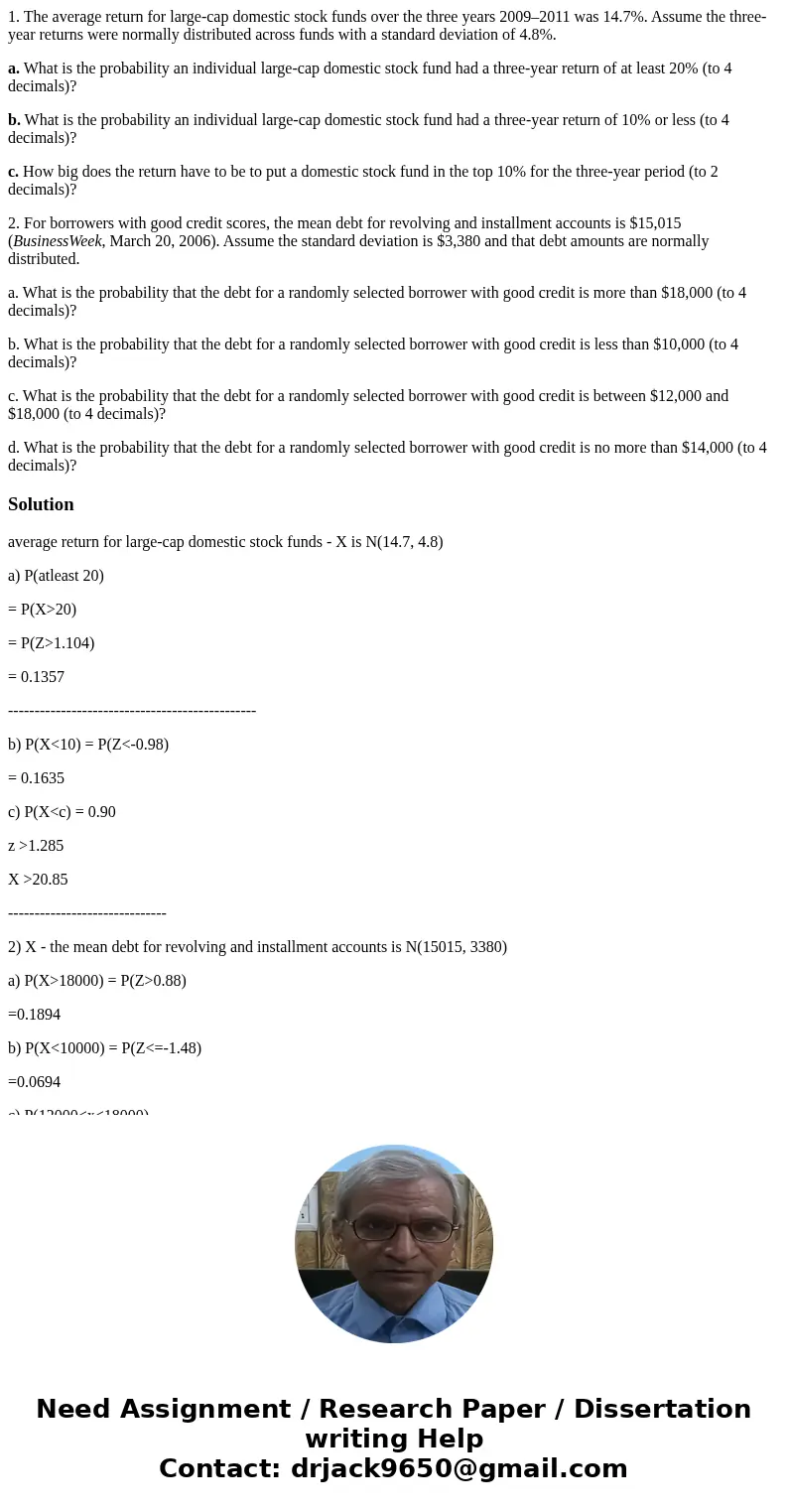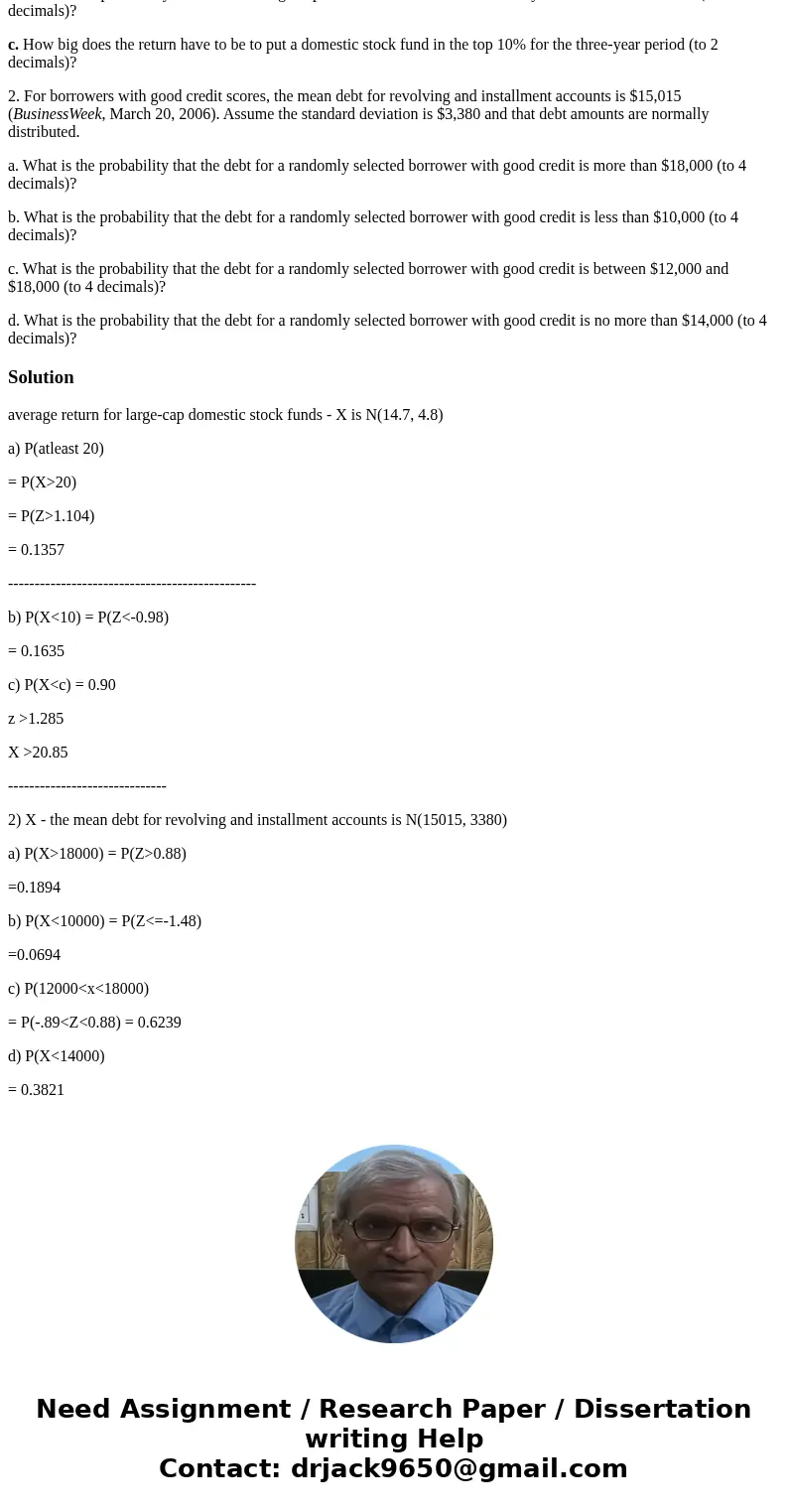1 The average return for largecap domestic stock funds over
1. The average return for large-cap domestic stock funds over the three years 2009–2011 was 14.7%. Assume the three-year returns were normally distributed across funds with a standard deviation of 4.8%.
a. What is the probability an individual large-cap domestic stock fund had a three-year return of at least 20% (to 4 decimals)?
b. What is the probability an individual large-cap domestic stock fund had a three-year return of 10% or less (to 4 decimals)?
c. How big does the return have to be to put a domestic stock fund in the top 10% for the three-year period (to 2 decimals)?
2. For borrowers with good credit scores, the mean debt for revolving and installment accounts is $15,015 (BusinessWeek, March 20, 2006). Assume the standard deviation is $3,380 and that debt amounts are normally distributed.
a. What is the probability that the debt for a randomly selected borrower with good credit is more than $18,000 (to 4 decimals)?
b. What is the probability that the debt for a randomly selected borrower with good credit is less than $10,000 (to 4 decimals)?
c. What is the probability that the debt for a randomly selected borrower with good credit is between $12,000 and $18,000 (to 4 decimals)?
d. What is the probability that the debt for a randomly selected borrower with good credit is no more than $14,000 (to 4 decimals)?
Solution
average return for large-cap domestic stock funds - X is N(14.7, 4.8)
a) P(atleast 20)
= P(X>20)
= P(Z>1.104)
= 0.1357
-----------------------------------------------
b) P(X<10) = P(Z<-0.98)
= 0.1635
c) P(X<c) = 0.90
z >1.285
X >20.85
------------------------------
2) X - the mean debt for revolving and installment accounts is N(15015, 3380)
a) P(X>18000) = P(Z>0.88)
=0.1894
b) P(X<10000) = P(Z<=-1.48)
=0.0694
c) P(12000<x<18000)
= P(-.89<Z<0.88) = 0.6239
d) P(X<14000)
= 0.3821


 Homework Sourse
Homework Sourse